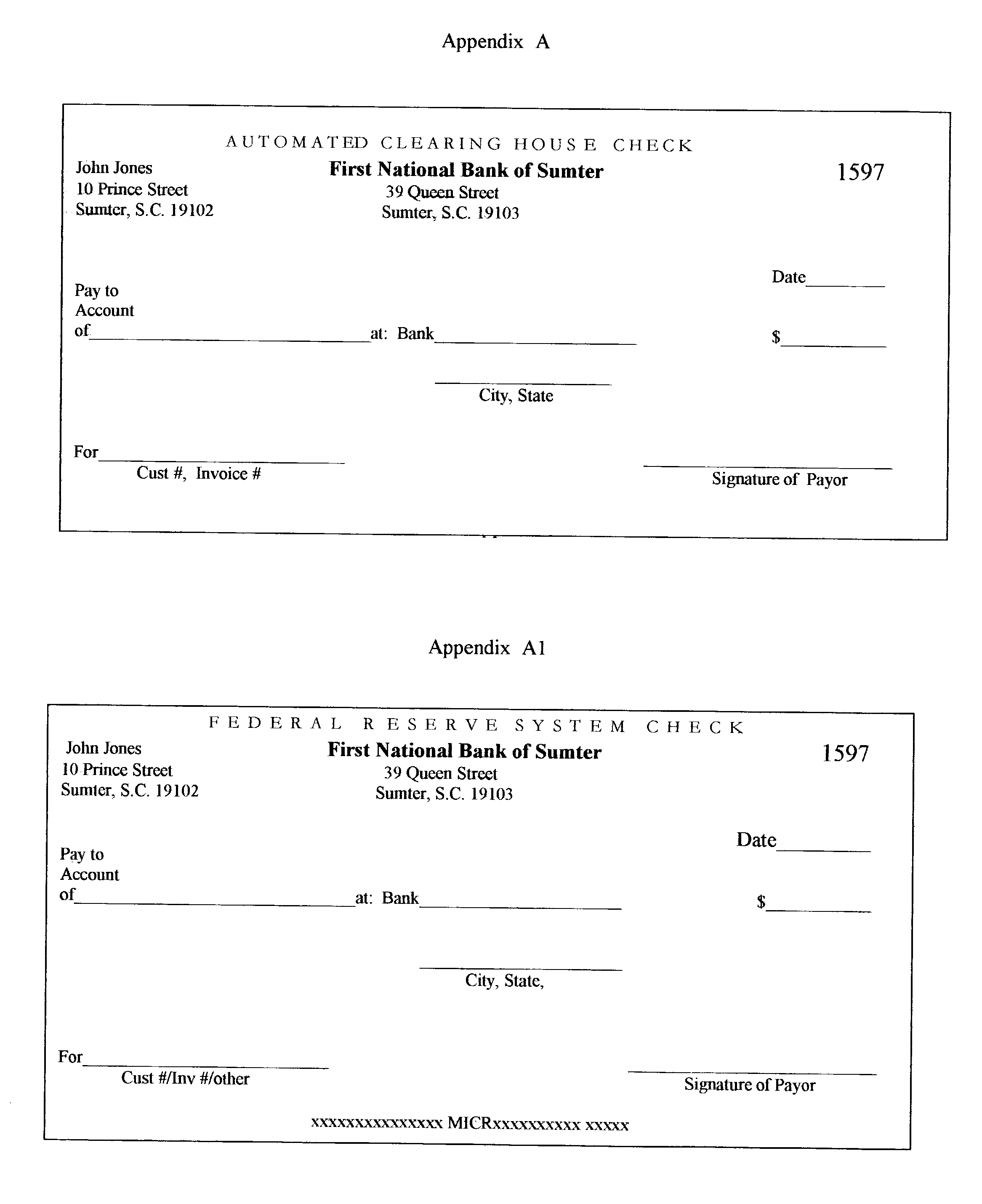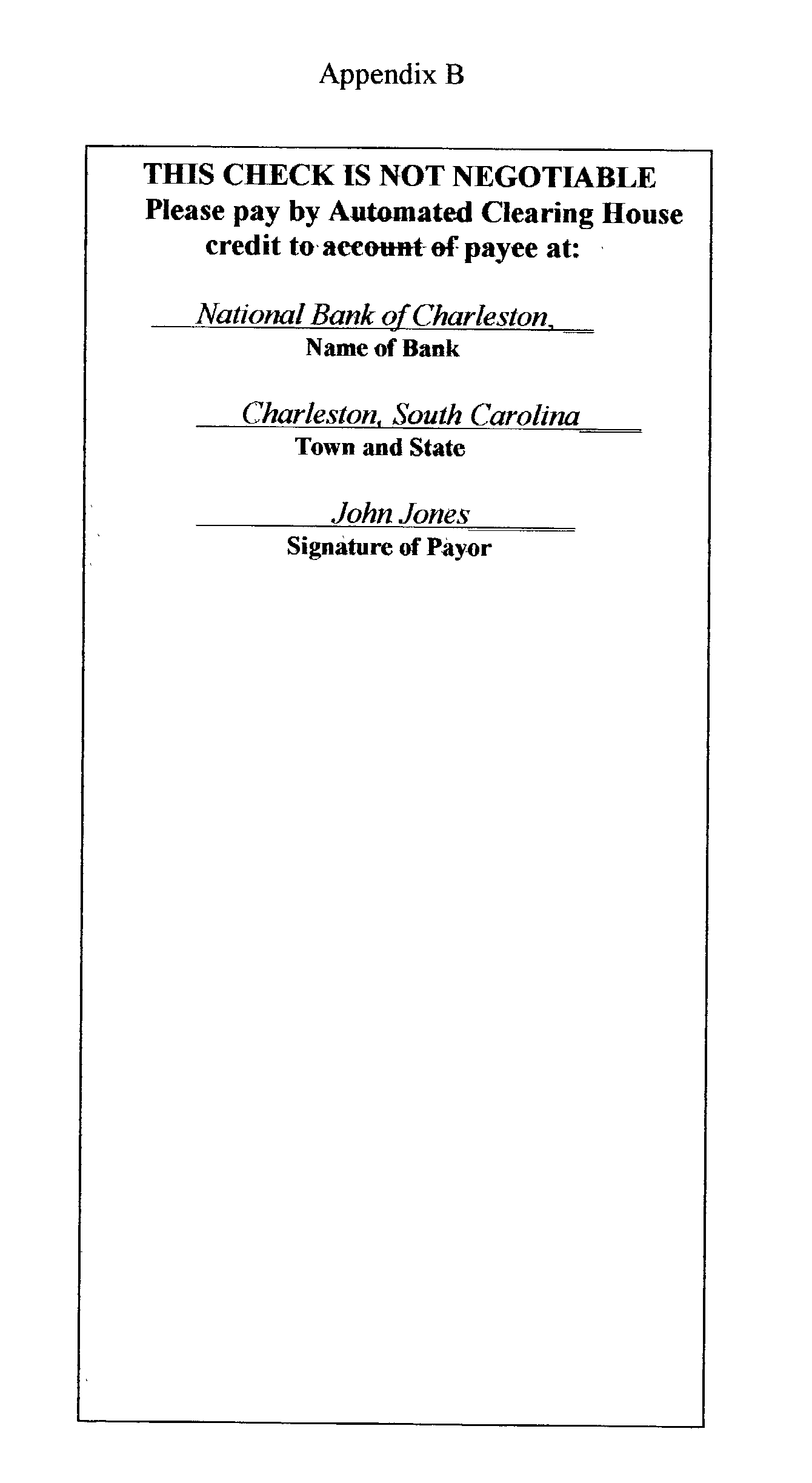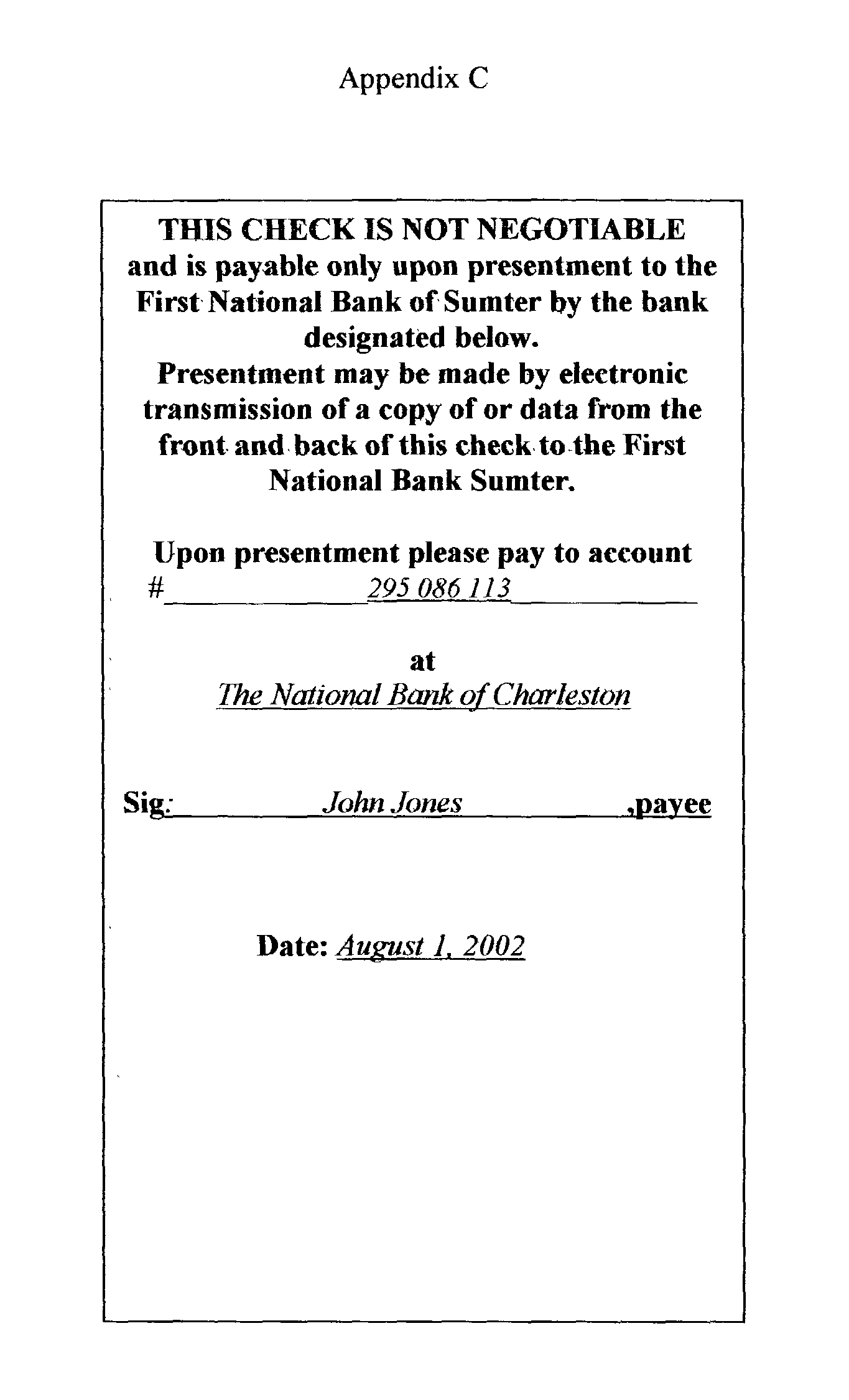The problems with the prior art relate partly to a missing piece in the mechanism of making electronic payments.
Truly direct electronic payments by bank customers from their accounts to named payees at other banks have not heretofore been possible.
This has resulted in a rather awkward
payment system in which consumers have only been able to benefit from the electronic facilities of banks by contracting with private intermediaries like Check Free and Pay Trust.
2. The Problem with Paper Checks: They are Too Costly.
Moreover, the expenses associated with the use of conventional paper checks are enormous, currently estimated, as noted above, at more than $125 billion per year.
The extensive handling of checks along the
route is not only expensive, but is fraught with risks of errors, physical damage, and other inadvertent losses.
Errors arise even in the
machine reading of the MICR (magnetic ink characters), digits required by the Fed to be printed at the bottom of every check.
To these costs must be added the risk of fraud.
Because conventional checks are negotiable instruments, and expressly designed to be indorsable for transfer of
payment rights to others, check forms can be stolen and bogus checks written on them.
Properly issued checks can also be lost or stolen along the paper
route, resulting in fraudulent indorsement.
A large fraction of checks are written at points of purchase, and the frequent incidents of fraud at those points result in heavy costs to merchants.
Although the occurrence of fraud at points of purchase and other points along the paper
route is minor in proportion to the total number of checks written, the expense in absolute numbers is very, very large.
The ultimate storage of cancelled checks at the end of their journey adds a further heavy expense.
This is a costly business.
Finally, there must be added the expense of reversal of payments arising from non-payment of checks for fraudulent issue or insufficient funds.
Truncation is complicated by requirement that payors specially authorize it.
Moreover, legal experts have raised a number of objections to truncation in the present status of the law, having to do mainly with the legal status of the substitute electronic checks.
Costs of mailing, handling, and
processing conventional checks are necessary concomitants of the paper route and are its major costs.
Other costs and risks: These mainly arise out of two features of the present system: the fact that conventional checks are negotiable, and the fact that they are intended for delivery to payees.
Another significant cost arises from overdrafts.
Negotiability first of all opens the door to the risk of bogus checks.
Then there is the problem of fraudulent indorsement.
Legitimate checks can be lost or stolen and then fraudulently indorsed for payment at the payee's bank or further transferred to another party, who as an innocent holder in due course of a negotiable instrument cannot be denied payment on account of the prior fraud.
Although fraud of any kind is very infrequent compared with the number of conventional checks written, less than one percent its cost in absolute numbers is in the billions of dollars every year, much of which falls on merchants and banks.
On the other hand, the risk of fraud in the case of ACH checks is inconsequential.
Thus, a forger would have to provide for payment into an account in his own name at an identified bank, making his eventual detection almost inevitable.
The problem of storage: Negotiable instruments law requires the secure storage of cancelled checks as well as their digital copies, for a lengthy period, as noted before.
The normal paper route not only requires time and delayed payments, it is also leads to enormous expense for the banking system when multiplied by billions of check transactions.
As for overdrafts: Another major cost of conventional checks is the occasional necessity to dishonor checks for errors or insufficient funds.
Unfortunately people do sometimes get careless and write "overdrafts," that is, checks drawn without funds in the bank to cover them.
ACH checks cannot prevent this.
The major expense results because conventional checks are delivered to payees and are sent on to payee banks before a payor bank knows anything about the matter.
The incidence of fraud or error in such checks leads to heavy losses for merchants.
This is not acceptable with conventional checks because of the risks of loss in the process and ensuing fraudulent indorsement.
Moreover, while smaller retail merchants frequently cannot afford the
electronic equipment required by the point of purchase privilege, mail order houses are large enough to have ample means to acquire such equipment.
There is no reason that private intermediaries cannot provide not only the comforts of written checks, but
receipt of the original cancelled checks.
This possibility is covered by the claims made herein, but it will be unfortunate if the privilege of a new and advantageous payment instrument is not made available to the public at large by the banking system itself so this is unnecessary.
The absence of a similar grace period in the new system is criticized as a
disadvantage.
Another criticism has been made that neither the new ACH type check, nor the conventional check with the special indorsement, can be used to make a quick payment at some points of purchase as, for example, in a payment line at a food mart, where no
electronic equipment is available to send the data from the check to the payor's bank.
There is some truth to this objection, but it is limited.
Until the new type of check is familiar, however, this might cause some problems, since most merchants are accustomed to sending checks presented by customers to their own banks.
Furthermore, because the new checks require the name and town of the payee's bank to be entered on them, a mistake in this information would also be subject to penalty.
While negotiability helps explain a
payment system based on bank notes, it does not help explain a
payment system based on instructions to withdraw finds from deposit accounts.
Excerpt: "Holder in due course allocates losses between two innocents; the problem arises because the wrongdoer cannot be made to bear the losses he or she caused.
Law professors emphasize the remarkable nature of HDC to spark the interest of law students in what would otherwise be a dull course; HDC doctrines can be especially unfair when applied to consumers.
 Login to View More
Login to View More  Login to View More
Login to View More 


